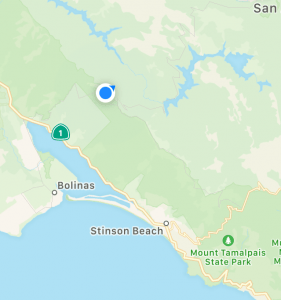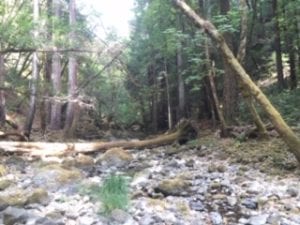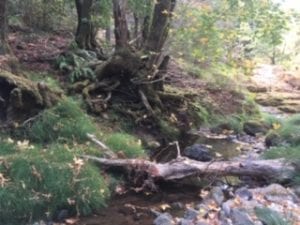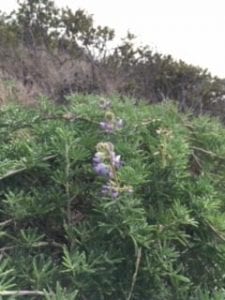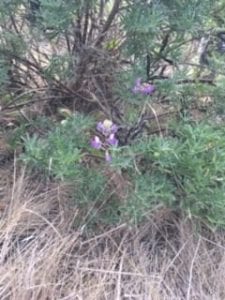The second field trip consisted of an adventure through the winding paths of Mount Tamalpais. After passing through the Alpine Dam following the hiking trail, we climbed down a steep hill to find an area where the red-flowering mimulus cardinalis could have inhabited. The mimulus cardinalis is a flowering plant that generally uses hummingbirds as pollinators to reproduce.
The habitat consisted of a small, rocky, valley-like clearing with a small stream running through the side. Although the environment seemed to be a difficult place to inhabit, if a population of mimulus cardinalis was able to properly establish itself within this area, there would be significantly less competition due to the harsher conditions like the rocky bedding and limited sunlight. However, since the mimulus cardinalis’s main pollinators are hummingbirds, this area is still fairly accessible and may encourage reproduction despite the environmental conditions. Unfortunately, there were no populations that were spotted around this area, though there was interesting display of what appeared to be a ladybug festival.
We then moved across the bridge towards the other side of Mt. Tamalpais to another destination that usually had a population of mimulus cardinalis. The habitat was a small indentation at the side of the mountain, which was very accessible by pollinators, and surrounded by damp soil with a fair amount of sunlight. However, since the area was so small, there is a high possibility of in-breeding within this population of mimulus cardinalis compared to populations that inhabit larger environments. 
Afterwards, in order to observe the population of lupinus aboreus with purple flowers, we ventured to the other side of the mountain facing Stinson Beach. Atop the cliff-side, we were able to spot many individuals of purple-flowering lupine. The environment these individuals faced was very different compared to the populations at Pescadero Beach. While the yellow-flowering lupinus aboreus at Pescadero Beach had sandy soil, lots of sunlight, and fairly strong winds, the lupine at Mt. Tamalpais seemed to have little to no sunlight due to the heavy fog covering that side of the mountain, dry, grainy soils, and cold winds. The individuals at Mt. Tamalpais resembled the size of lupine at the cliff of Pescadero Beach, and appeared slightly smaller than those within the marshy area. The flowers also seemed to grow close to the ground in comparison to those at Pescadero.
